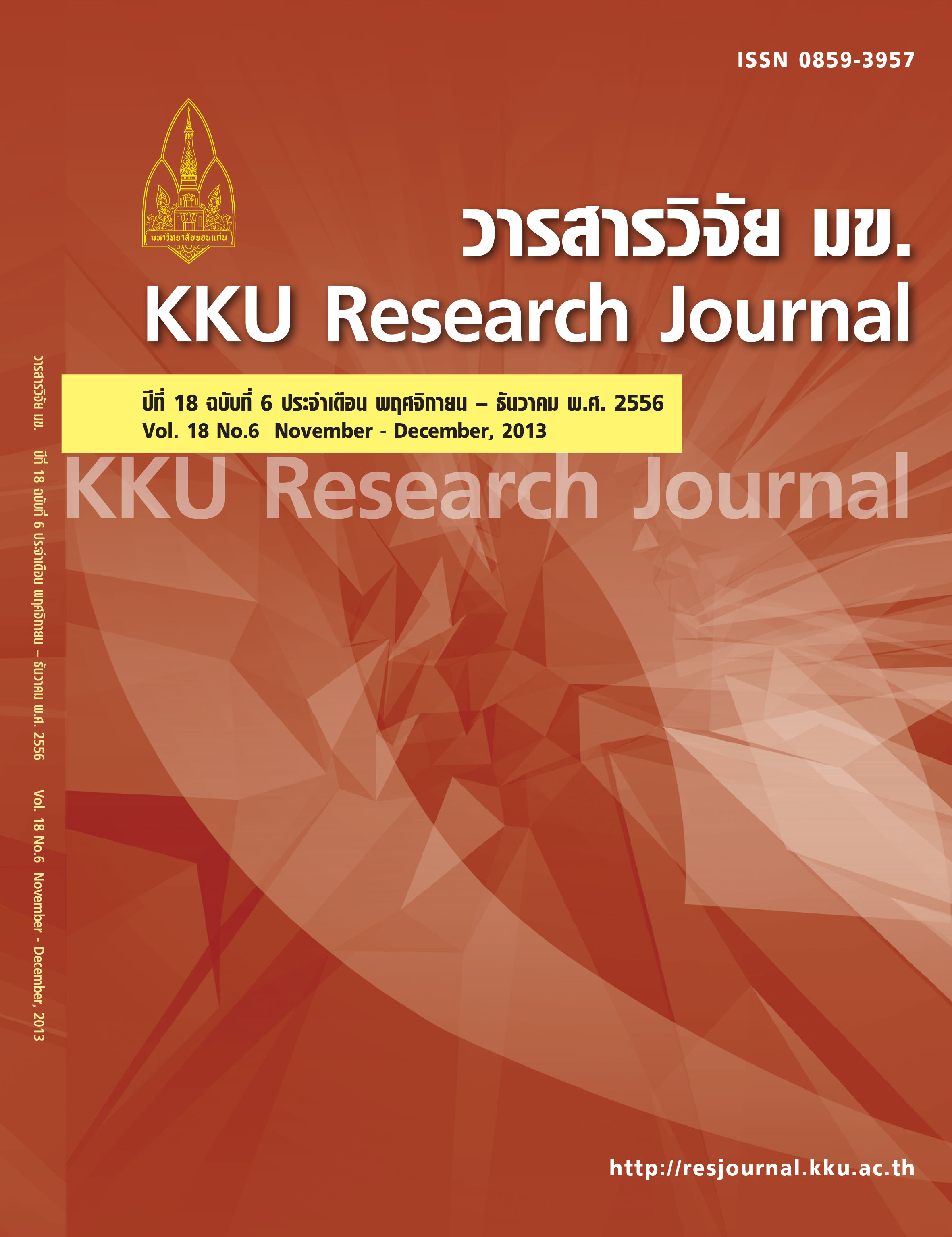Quality assurance of MRI scanner using ACR phantom
Main Article Content
Abstract
The importance of quality control and performance assessment of MRI is to monitor and prevent errors that may occur, including of early problem solving, particularly for the frequently used and a long lifetime machine. The purpose of this study is to examine the quality of PHILIPS MRI Achieva 3.0T belonging to Faculty of Medicine, Khon Kaen University. Seven quantitative tests recommended by The American College of Radiology (ACR) were used in the study. In addition, the measures of signal-to-noise ratio recommended by medical science centre, Thailand were recorded. The results were compared with the ACR recommended ranges. The variations of SNR were observed. The results showed that the measures of geometric accuracy were in the acceptable range (?2.0 mm). The resolution of 0.9 mm, 1.0 mm, and 1.0 mm were able to detect in the high-contrast spatial resolution slice where the recommended value is 1.0 mm. The accuracy test of slice thickness was within the acceptable range of 5.0 mm ? 0.7 mm where the measured thickness was 5.3 mm. The results of slice position accuracy was 4.6 mm which is in the acceptable range (<5.0 mm). The measures of image intensity uniformity were 89.1% which is higher than the recommended range of >82.0%. The percent signal ghosting was equivalent to 0.0041 (recommended value is less than 0.025). The results also showed that 39 low-contrast objects (spokes) were detectable where the standard number should be more than 37 spokes. The measures of signal-to-noise-ratio indicated that the mean signal intensity ratio was related to the previous measures. In conclusion, the assessment results of the MRI were in the acceptable ranges and passed the ACR phantom tests.
Article Details
References
(2) American College of Radiology. Phantom Test Guidance for the ACR MRI Accreditation Program2005 [cited 2012: Available from: https://www.acr.org/~/media/ACR/Documents/ Accreditation/MRI/LargePhantomGuidance.pdf.
(3) Radiology American College. Phantom Test Guidance for the ACR MRI Accreditation Program.,2005.
(4) MagNet Manetic Resonance Imaging Consultancy. Quality Assurance, Specifi cation and Safety. 2009 [cited 2013 18 May 2013]; Available from: https://www.magnet-mri.org/index.htm.
(5) Ihalainen, T.M., et al., MRI quality assurance using the ACR phantom in a multi-unit imaging center. Acta Oncologica, 2011. 50(6): p. 966-972.
(6) Hagmann, P., et al., Understanding diffusion MR imaging techniques: From scalar diffusionweighted imaging to diffusion tensor imaging and beyond. Radiographics, 2006. 26(SPEC. ISS.): p. S205-S223.
(7) Zhiyue, J.W. and S. Youngseob, A quality assurance protocol for diffusion tensor imaging using the head phantom from American College of Radiology. Med. Phys., 2011. 38(7): p. 4415-21.


